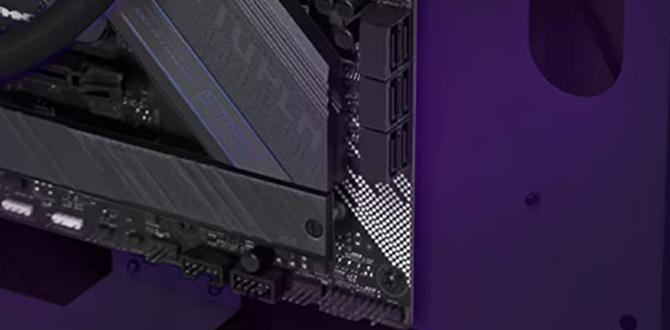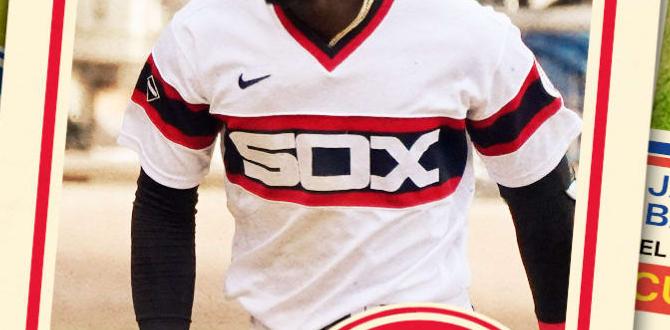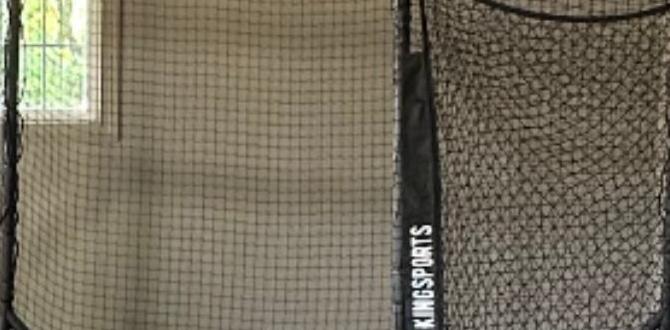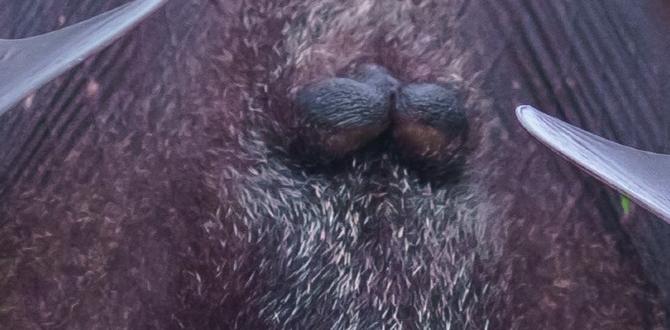Quick Summary:
Choosing the right youth catchers shin guards is crucial for protecting young players. Look for a good fit, comfortable padding, and durable materials to ensure optimal safety and performance behind the plate. This guide will help you find the perfect pair.
Behind home plate, there’s no position more vital – or more exposed – than the catcher. Young players stepping into this role deserve the best protection possible. That’s where youth catchers shin guards come in. These aren’t just extra gear; they are essential tools for keeping legs safe from foul balls, errant pitches, and aggressive slides. Without the right shin guards, a youth catcher risks painful injuries that could sideline them for the season. But don’t worry! We’re here to break down exactly what you should look for, making sure your young catcher can focus on the game with complete confidence.
Why Shin Guards Are a Catcher’s Best Friend
As a youth catcher, your legs are constantly in the line of fire. Foul tips can sting, and even a minor impact can be a major distraction. Shin guards act as a crucial barrier, absorbing the shock and preventing bruises, cuts, and more serious injuries. Think of them as your catcher’s armor, designed specifically to protect the bones and muscles of the lower leg. Good shin guards allow young players to focus on blocking pitches, framing strikes, and calling the game, rather than worrying about getting hurt.
Key Features of Quality Youth Catchers Shin Guards
When you’re shopping for youth catchers shin guards, a few key features will tell you if you’re looking at a quality product. It’s not just about the brand; it’s about the design and materials that offer the best protection and comfort.
- Padding: Look for dense, high-impact foam or gel padding. This is what absorbs the force of a ball or bat. The thicker and more resilient the padding, the better the protection.
- Coverage: Shin guards should extend from just below the knee down to the top of your cleats. Proper length ensures no gaps are exposed.
- Fit and Straps: Adjustable straps are essential for a snug, secure fit. They should keep the guards in place without digging into the skin. Most youth models use Velcro or buckle straps.
- Material: Durable plastics like ABS or PVC are common for the outer shell. They provide a hard, protective layer. Inner linings should be comfortable and moisture-wicking to prevent chafing and sweat buildup.
- Ventilation: Some shin guards feature vents to help keep legs cooler, especially during long games or practices in warm weather.
Understanding Shin Guard Designs: What to Look For
Youth catchers shin guards come in a few different styles, each offering slightly different benefits. The best choice often depends on the player’s age, league rules, and personal preference.
Full Shin Guard Style
These are the most common for youth catchers. They typically offer full leg coverage from just below the knee down to above the foot. They provide the most comprehensive protection and are excellent for developing catchers who need to feel secure and protected.
Split-Knee Design
Some shin guards have a split design around the knee. This allows for more flexibility and mobility, which can be important for younger players who are still developing coordination and getting used to the catcher’s stance. This design doesn’t sacrifice protection, as the shin area is still fully covered.
Individual Shin/Ankle Guards
Less common for youth catchers, these are more like oversized shin pads that don’t extend as far down. While they offer some protection, they generally don’t provide the complete coverage needed for the rigors of catching at younger ages. We’ll focus on the full-coverage styles as they are standard for most youth leagues.
The Importance of Fit: Getting It Right
A perfectly fitting shin guard is paramount. Too loose, and it can shift around, leaving precious areas unprotected. Too tight, and it can be uncomfortable, restricting movement and even causing chafing. Here’s how to ensure a great fit:
- Measure: Most manufacturers provide sizing charts based on leg length. Measure from the middle of the kneecap down to the point where the foot meets the ankle (where the top of the cleat sits).
- Placement: When trying them on, ensure the top of the shin guard sits comfortably below the kneecap, and the bottom extends to cover the top of the foot area, just above the cleats.
- Strap Adjustment: Fasten all straps snugly. You should be able to slide one finger between the strap and your leg. The guard should not slide down when you bend your knees or stand up.
- Mobility Check: Practice your catching stance – squatting, rising, and moving your legs. The shin guards should stay in place and not restrict your natural movements.
Top Features for Youth Catcher Protection
Beyond the basic design, certain features elevate youth catchers shin guards from good to great. These are the elements that truly make a difference in protecting young athletes.
Padding Density and Distribution
The “feel” of the padding matters. High-density foam offers superior shock absorption. Manufacturers often use different densities in different zones – denser padding where direct impact is most likely (like the shin bone). Look for guards that feel substantial but not overly bulky, offering a good balance of protection and mobility.
Reinforced Toe Protection
Some shin guards include reinforced toe caps or a toe-flapper extension. This is a great feature that adds an extra layer of defense against foul balls that might hit the front of your foot or shoe area.
Strap Durability and Comfort
Cheap, flimsy straps can break or become uncomfortable quickly. Look for robust Velcro that holds strong, or sturdy buckle systems. Ensure the edges of the straps are smooth and won’t dig into the skin during play.
Inner Liner and Moisture Wicking
A comfortable inner lining can prevent painful chafing and irritation, which is especially important for young players still getting used to wearing gear. Moisture-wicking materials help keep the legs dry, reducing the chance of skin issues and adding to overall comfort.
Choosing the Right Size: A Crucial Step
Getting the size right is non-negotiable for effective protection. Manufacturer sizing charts are your best friend here. While they provide a general guideline, remember that players’ builds can vary.
Here’s a general guide based on typical youth sizing, but always refer to the specific brand’s measurements:
| Youth Size | Typical Age Range | Measured Length (Knee to Ankle) |
|---|---|---|
| Youth Small (YS) | 5-7 years | 10-12 inches |
| Youth Medium (YM) | 8-10 years | 12-14 inches |
| Youth Large (YL) | 11-13 years | 14-16 inches |
| Junior Large (JL) / Intermediate | 13+ years/Smaller Adults | 16-18 inches |
Remember, the measured length is from the center of the kneecap to where the top of the cleat will be. If a player is on the cusp between sizes, it’s often better to go with the larger size, provided the straps allow for a secure fit. A slightly larger guard that fits snugly is better than a too-small guard that leaves gaps.
Comparing Popular Youth Catcher Shin Guard Brands
When it comes to gear, you want reliable brands that have proven themselves. Here are a few that consistently deliver quality youth catchers shin guards:
- All-Star: Known for their durable and well-padded gear, All-Star offers excellent options for youth catchers. Their models often feature solid construction and comfortable linings.
- Easton: Easton is a powerhouse in baseball equipment, and their catcher’s gear is no exception. They provide good protection and often incorporate ventilation features.
- Wilson: A household name in sports, Wilson offers reliable shin guards that balance protection, comfort, and value.
- Champro: Champro often provides a more budget-friendly option without compromising too much on essential protective features. They are a great choice for parents looking for reliable gear at a good price point.
- Rip-It: This brand focuses heavily on catcher’s gear and often incorporates innovative designs for fit, comfort, and protection.
How to Care for Your Youth Catchers Shin Guards
Proper care will extend the life of your catcher’s shin guards and keep them performing at their best. It’s simple maintenance that makes a big difference.
- Wipe Down After Use: After every practice or game, wipe down the exterior of the shin guards with a damp cloth to remove dirt and sweat.
- Air Dry: Never store wet shin guards in a closed bag. Always let them air dry completely in a well-ventilated area to prevent mold, mildew, and odor buildup.
- Clean Straps: Occasionally, clean the Velcro straps to maintain their stickiness. You can use a stiff brush to remove lint and dirt.
- Deep Cleaning (Infrequent): If they become particularly grimy, you can wash them gently with mild soap and water, then rinse thoroughly and air dry. Check the manufacturer’s recommendations, as some materials might not tolerate submersion. Most manufacturers advise against machine washing or drying.
- Inspect Regularly: Before each use, check for any tears in the padding, broken straps, or cracking in the plastic shell. Minor issues can sometimes be repaired, but significant damage means it’s time for a replacement.
Beyond Shin Guards: A Catcher’s Protective Package
While shin guards are critical, a youth catcher’s safety relies on a complete set of protective equipment. Make sure your young athlete is also equipped with:
- Catcher’s Mask/Helmet: Essential for protecting the head, face, and throat. Modern designs combine a helmet and mask for maximum protection.
- Chest Protector: Guards the upper body against errant pitches and foul balls, as well as impacts from collisions at the plate.
- Catcher’s Mitt: A specialized glove designed for durability and a large pocket to help secure pitches.
- Throat Protector: Often attaches to the mask, providing an extra buffer for the throat area.
Having a full, standardized set of catcher’s gear ensures that your young player is protected from every angle. Leagues often have rules about what gear is mandatory, so always check those guidelines.
FAQs About Youth Catcher Shin Guards
Q1: How often should youth catcher shin guards be replaced?
A1: Youth catcher shin guards should be replaced when there’s visible damage such as cracks in the shell, worn-out padding that no longer absorbs impact effectively, or broken straps that can’t secure the guard properly. For growing players, they will also need to be replaced as they outgrow them.
Q2: Can shin guards be too bulky for a youth catcher?
A2: While shin guards need to be substantial enough to offer protection, excessive bulk can hinder a young player’s mobility and comfort. Look for designs that balance protective padding with a streamlined profile that allows for easy movement behind the plate.
Q3: Are there specific shin guards for different age groups within youth baseball?
A3: Yes, most brands offer youth-specific sizing. The main considerations are length and width to ensure a proper fit for smaller legs. The protective materials and design principles are generally consistent across youth models, focusing on adequate padding.
Q4: What is the difference between a youth catcher’s shin guard and an adult one?
A4: The primary differences are size and proportion. Youth shin guards are designed to fit smaller legs and are typically shorter. While adult shin guards might offer more advanced features or heavier-duty padding, youth models prioritize safety, mobility, and a reliable fit for developing players.
Q5: How do I clean my catcher’s shin guards?
A5: Gently wipe the exterior with a damp cloth and mild soap. Always air dry them completely. Avoid machine washing or harsh chemicals, which can damage the materials. Ensure straps are clean so they maintain a good grip.
Q6: Can shin guards help prevent injuries other than foul tips?
A6: Absolutely. Shin guards also protect against injuries from aggressive baserunners sliding into the plate, accidental contact with bats, or impacts from collisions. They provide a crucial layer of defense against a variety of common baseball incidents.
Q7: Where can I find reliable sizing charts for youth shin guards?
A7: You can find reliable sizing charts directly on the websites of baseball equipment manufacturers (like All-Star, Easton, Wilson) or on the product pages of major sporting goods retailers. Always check the specific brand’s chart, as sizing can vary.
Conclusion: Gear Up for Confidence and Safety
For any young player stepping behind the plate, the right youth catchers shin guards are more than just an accessory – they are a fundamental piece of safety equipment. By understanding what to look for in terms of padding, coverage, fit, and material, you can make an informed decision that supports your young athlete’s confidence and well-being. Remember to measure carefully, check sizing charts, and consider the brands known for their quality and durability. A well-chosen pair of shin guards allows your catcher to focus on the game, develop their skills, and enjoy every pitch with the assurance that they are protected. Here’s to a safe and successful season!




